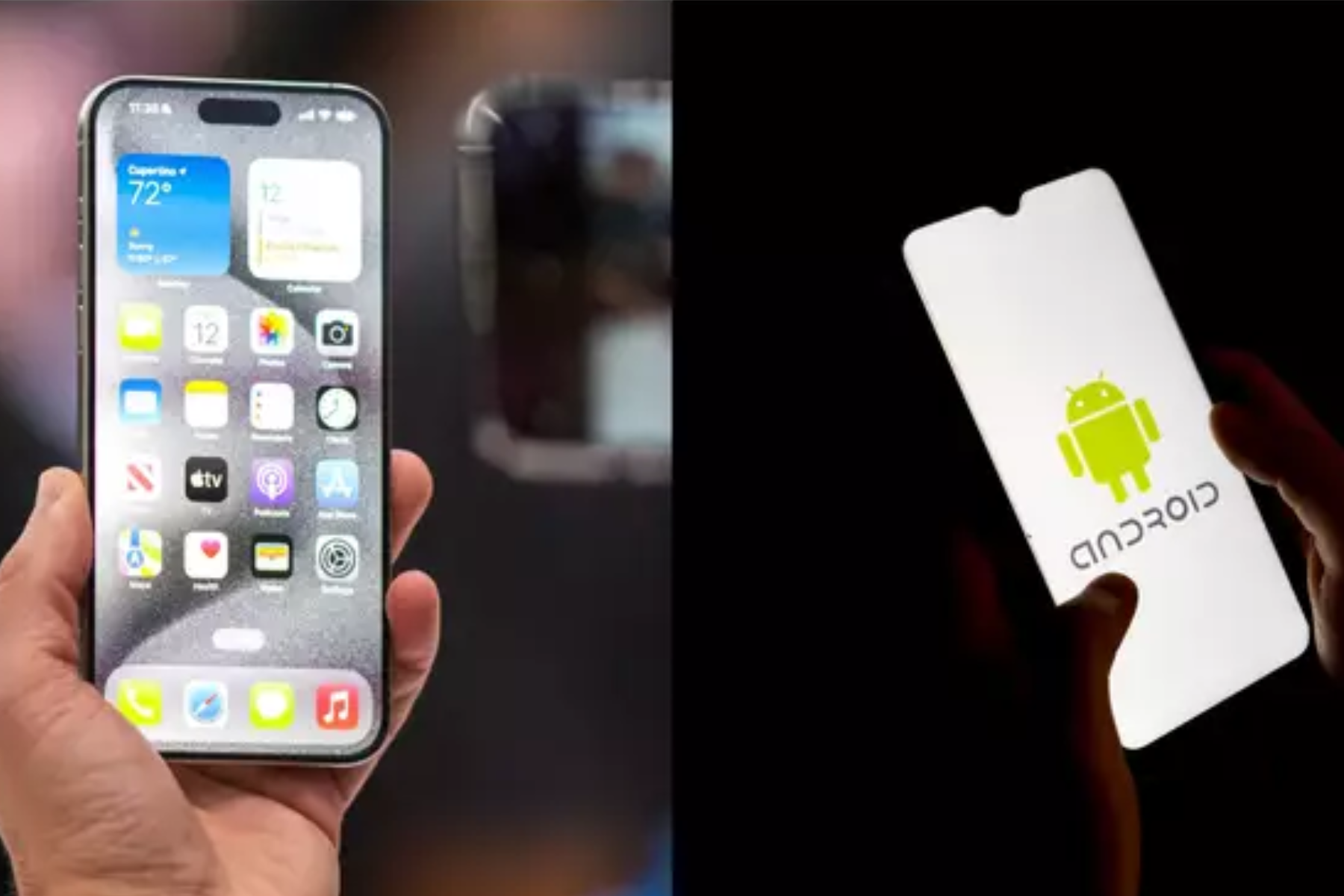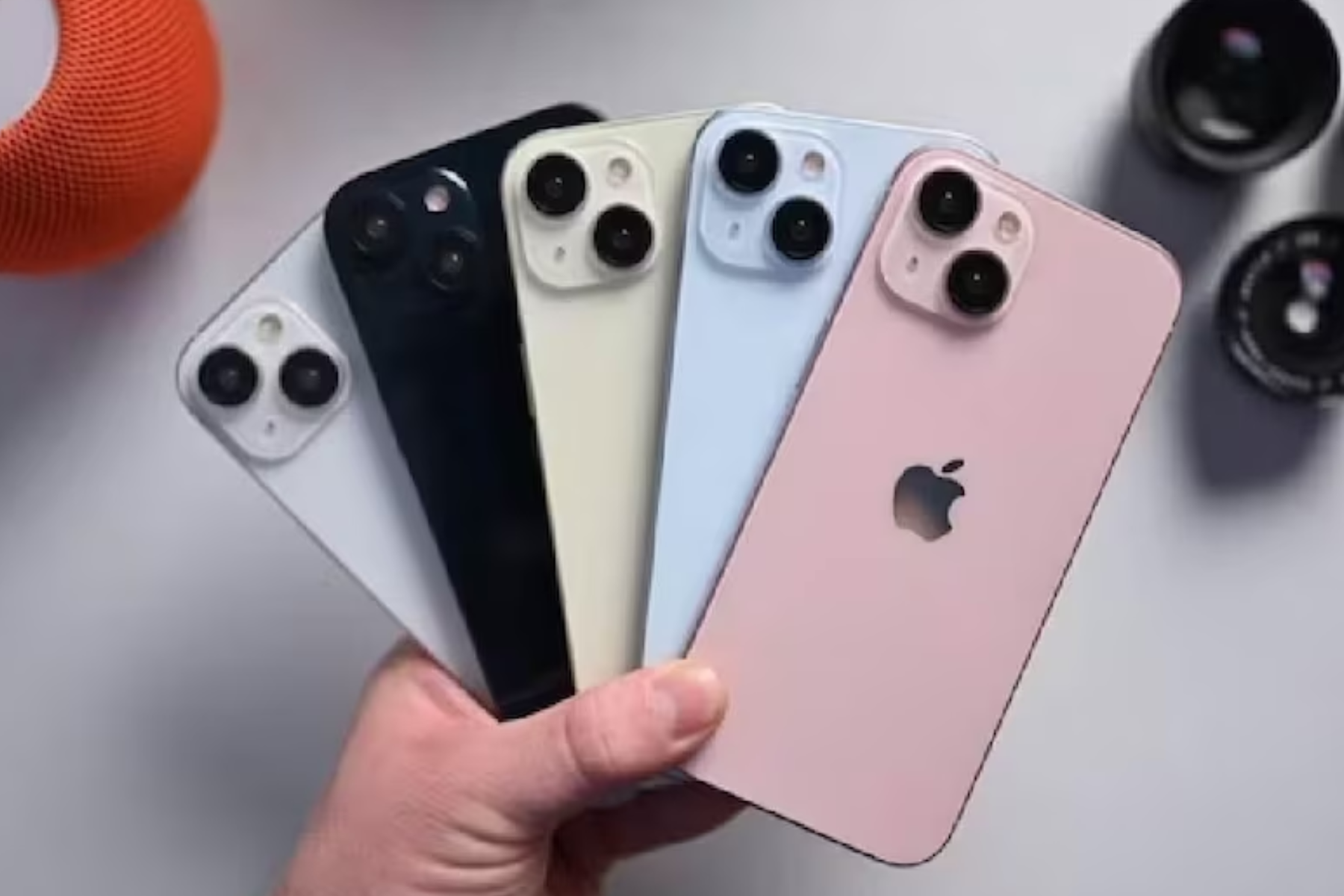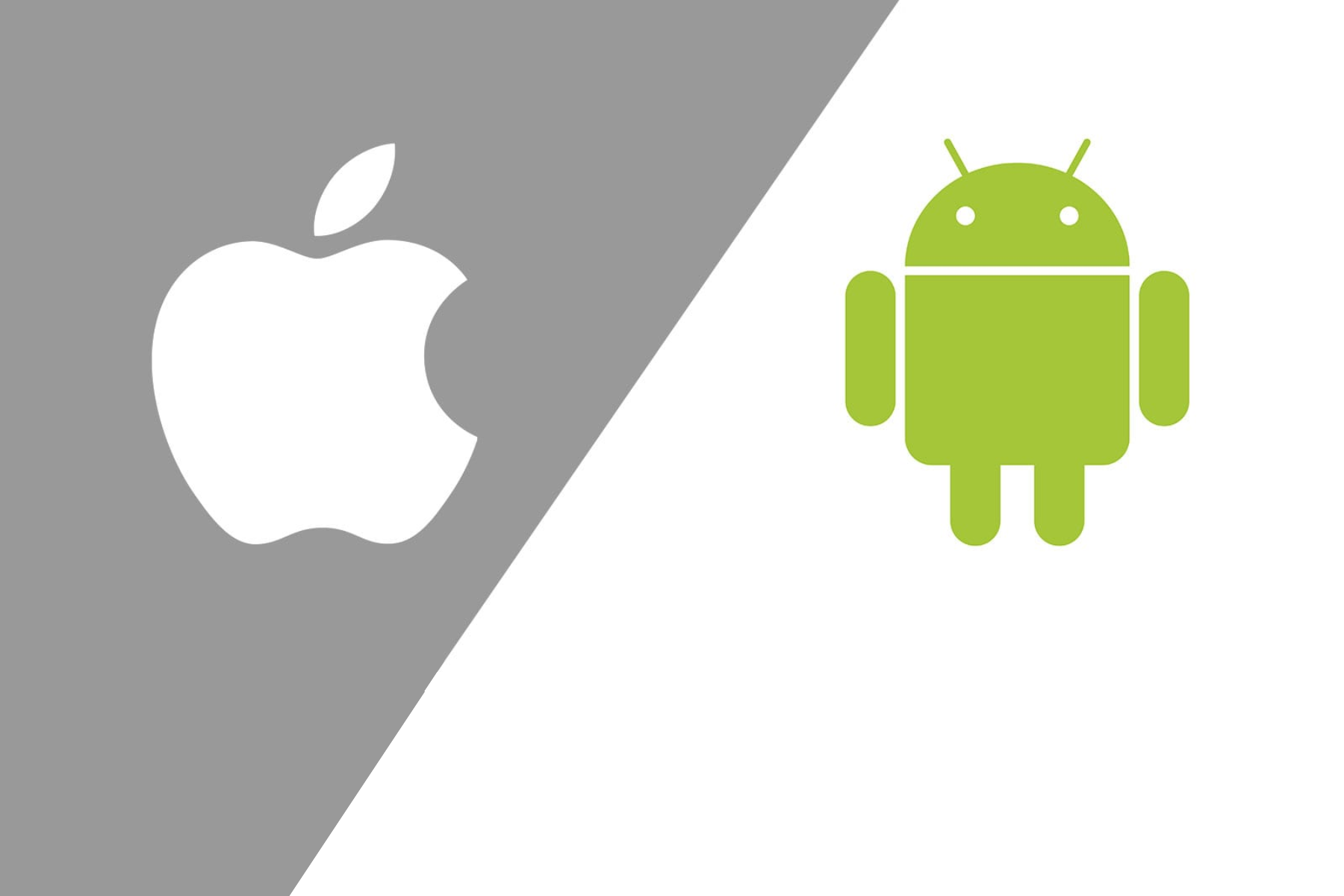Apple Users Feel Robbed Because New IPhone Function Has Been On Android For Years
Discover why apple users feel robbed because new iphone function has been on android for years. Explore the debate and insights into this tech controversy.
Author:Tyreece BauerReviewer:Gordon DickersonSep 15, 202375.1K Shares1.2M Views

If you haven't heard, everyone is talking about Apple's newest iPhone launch. Yesterday, on September 12th, the company announced the iPhone 15 series.
The new features excite Apple enthusiasts, but not everyone is happy about them.
The iPhone 15 Series - A Milestone Advancement With A Controversial Screen Refresh Rate
The iPhone 15 series marks the 16th generation of a device that revolutionized the smartphone landscape back in 2007. This update has been heralded by experts as the most significant advancement in the device's capabilities in the past three years.
Among the multitude of new features, such as the introduction of a USB-C charging cable and Precision Finding, one particular aspect has garnered significant attention and, in some cases, criticism—the screen refresh rate of the latest model.
To break it down for those unfamiliar with the terminology, the screen refresh rate essentially measures how frequently a screen's static image changes per second and is denoted in Hertz (Hz).
A screen with a refresh rate of 60 Hz means it displays 60 frames per second, while 120 Hz indicates 120 frames per second, and so on.
Why is this crucial? A higher refresh rate translates to a smoother viewing experience. Therefore, it's natural for people to expect a higher-end Hertz spectrum for the new iPhone 15 series. However, this was not the case.
One prominent voice in the tech community, Canadian tech content creator @RjeyTech, voiced his discontent on Twitter. He asserted:
“„120Hz is not a 'Pro' feature; just because Apple calls it Pro Motion, doesn't make it a premium feature. There are $200 Android phones that come with a 120Hz display. My point is an $800 iPhone shouldn't launch with a 60Hz display in 2023! It's the consumers who are being robbed; stop trying to justify a 60Hz panel on an $800 phone!- @RjeyTech
In another tweet, Rjey addressed the argument that 'the average consumer doesn't care about 120Hz,' dismissing it as invalid. He argued:
“„It's not that the average consumer doesn't care; the average consumer DOESN'T KNOW THEY ARE BEING ROBBED. The iPhone 15 should feature at least a 90Hz refresh rate in 2023. But no, here we go again with 60Hz.
Another tech enthusiast, @android_fhd, also took to the platform to share his perspective on Apple's recent launch. He stated:
“„It's that time of the year when many people still buy the $799 iPhone with a 60Hz display because they think iPhone 60Hz is better than Android 120Hz.- @android_fhd
If this information hasn't deterred you, and you're still eager to get your hands on the latest iPhone, you'll need to start saving your pennies. Why? Here's the guide:
IPhone 15 And IPhone 15 Plus Features Guide
The iPhone 15 and iPhone 15 Plus, which are geared toward consumers and start at $799, are Apple's newest flagship handsets.
They have been joined by the iPhone 15 Pro and the iPhone Pro Max, both of which are geared toward professionals, have a starting price of $999, and offer additional capabilities and features.
The iPhone 15 family, just like the iPhone 14 range from the previous year, includes four different models: two iPhones with 6.1-inch displays and two iPhones with 6.7-inch displays.
Both the standard iPhone 15 (with a screen size of 6.1 inches) and the iPhone 15 Plus (with a screen size of 6.7 inches) are included in the consumer lineup.
The iPhone 15 Pro, with a display size of 6.1 inches, and the iPhone 15 Pro Max, with a display size of 6.7 inches, are examples of higher-end, more expensive devices.
Although the iPhone 15 and iPhone 15 Plus are still very powerful handsets, the best features, including as those found on the iPhone 14 series, have been reserved for the iPhone 15 Pro models. This is done to justify the increased price of these models.
According to Macrumors, the iPhone 15 and 15 Plus come in five different colors: pink, yellow, green, blue,and black.
The most significant update to the lineup is the replacement of the Lightning port, which has been standard on every iPhone for more than a decade, with a USB-C socket.
However, the data transfer speeds on these models will remain the same as they were with Lightning, which is USB 2.0.
The non-Pro iPhone lineup in 2023 receives a brand new feature called the Dynamic Island. This feature had its first appearance a year earlier in the iPhone 14 Pro lineup.
The TrueDepth camera as well as a number of other sensors are located on the Dynamic Island, which has taken the position of the display's previous notch at the top.
The software running inside the black Dynamic Island, which adapts itself fluidly to display important information and permit user interaction, conceals the physical components that make up the island.
The A16 Bionic chip that is included in the iPhone 15 and iPhone 15 Plus is the same chip that made its debut in the iPhone 14 Pro and iPhone 14 Pro Max.
This chip consumes 20% less power and delivers 50% more memory bandwidth than the A15 Bionic chip that was present in the iPhone 14 and iPhone 14 Plus.
Among the improvements to the camera is a brand-new main camera that has a resolution of 48 megapixels and a sensor with four pixels, but it only takes pictures at a resolution of 24 megapixels by default.
The new Main camera comes with an additional 2x Telephoto option, which is intelligently cropped from the original image captured by the full camera.
Portraits no longer require switching to Portrait mode, since the iPhone 15 detects a person, dog, or cat in the frame and automatically captures depth information.
Portraits benefit from finer definition, more vibrant colors, and greater low-light performance thanks to the upgraded camera system, while Night mode sees similar enhancements.
A second-generation Ultra Wideband processor improves proximity-based capabilities, allowing iPhones to connect at three times the range previously. Precision Finding in the Find My app allows you to locate your pals even amid tight crowds.
When compared to their predecessors, the iPhone 15 and 15 Plus have the same battery life, with video playing lasting up to 20 hours on the iPhone 15 and 26 hours on the iPhone 15 Plus.
The iPhone 15 models, like previous generations, feature 5G connectivity (both sub-6GHz and mmWave in the US), and they use a new Qualcomm X70 modem. Because carriers now use eSIM, iPhone models in the United States are no longer sent with a physical SIM card.
Fortunately, the wait won't be too long. Apple's latest offerings will hit the shelves on September 22nd, allowing tech enthusiasts and Apple loyalists to experience firsthand whether the new features justify the price point and screen refresh rate.
Resistance To New iPhone With Android Features Among Apple Users
It is absolutely necessary to have a solid understanding of the environment as well as the particular Android features that have been integrated into the iPhone ecosystem.
Here are some key factors contributing to Apple users' reluctance toward these changes:
Loyalty To The Apple Ecosystem
- Apple users have invested heavily in the Apple ecosystem, including iPhones, MacBooks, Apple Watches, and more. They appreciate the seamless integration between these devices, which is not always possible with Android products.
- Users may feel that adopting Android-like features could disrupt the cohesion and unique experience offered by Apple's ecosystem.
Quality Control And User Experience
- Apple has a reputation for stringent quality control and a commitment to delivering a consistent user experience. Some users fear that importing Android features might compromise this dedication to excellence.
- They worry that integrating features from Android, which caters to a wider range of devices and manufacturers, might lead to compatibility issues or glitches.
Privacy And Security Concerns
- Apple has taken a strong stance on user privacy and data security. Some Apple users believe that Android's more open system may expose their personal information to greater risks.
- They may be apprehensive about the potential impact of Android-like features on their data privacy and overall security.
Resistance To Change
- Humans, by nature, tend to resist change, especially when they have become accustomed to a certain way of doing things. Apple users may feel comfortable with the current iPhone interface and may not see the need for Android-inspired changes.
- They may worry that these changes will require them to relearn how to use their devices, which can be frustrating.
Perceived Uniqueness And Brand Identity
- Apple users often associate their choice of device with a sense of uniqueness and brand identity. Some may feel that adopting Android features dilutes this uniqueness.
- They value the exclusivity of Apple products and may resist changes that make their devices resemble Android devices too closely.
Price Considerations
- Apple products are generally considered premium and come with a higher price tag. Some users may be concerned that integrating Android features might not justify the premium they pay for their iPhones.
- They may question whether they are getting enough added value to warrant the cost.
The Fear Of Losing Innovation
- Apple has traditionally been viewed as an industry leader in innovation. Users may worry that borrowing features from Android signals a lack of originality or a failure to set new trends.
- They expect Apple to set the standard for smartphone technology and may resist any perception of playing catch-up with Android.
Community And Peer Pressure
- The Apple community is known for its fervent following. Users often engage with other Apple enthusiasts online and offline.
- Peer pressure and the desire to conform to the expectations of the Apple community can influence users' attitudes toward Android-like features.
Choosing Between iPhone And Android - Practical Considerations
Here are some key considerations when deciding between an iPhone and an Android device in this evolving landscape:
- Pricing and Budget - iPhones tend to be more expensive upfront, with premium models often surpassing the $1,000 mark. Android offers a wider price range, making it more accessible for budget-conscious buyers.
- Ecosystem Loyalty - Existing loyalty to either the Apple or Android ecosystem can heavily influence your decision. Switching ecosystems may require repurchasing apps and adjusting to a new interface.
- Privacy and Security - Apple is known for its strong stance on user privacy and security. If these factors are top priorities for you, an iPhone might be the preferred choice.
- Customization and Openness - Android devices offer more customization options and openness in terms of app installation and system tweaks. If you value personalization and flexibility, Android could be the way to go.
- Compatibility and Integration - If you own other Apple devices like MacBooks, iPads, or Apple Watches, an iPhone may provide a seamless and integrated experience.
- Ecosystem Features - Consider the unique features and services offered by each ecosystem, such as iMessage on Apple devices or Google Assistant on Android.
- Hardware Preferences - Personal preferences regarding hardware, such as camera quality, screen size, and design, can play a significant role in your decision.
- App Selection - While both platforms have extensive app stores, certain apps and games may debut exclusively on one platform before the other.
- Long-Term Support - iPhones typically receive longer software support, with Apple providing updates for several years. Android devices vary in terms of software longevity, depending on the manufacturer.
Frequently Asked Questions
How Does A Higher Screen Refresh Rate Affect The Overall Smartphone Experience?
A higher screen refresh rate results in smoother animations and scrolling, providing a more fluid and responsive user experience.
What Factors Contribute To Apple Users' Loyalty To The Brand And Its Ecosystem?
Apple's reputation for quality control, privacy measures, and seamless ecosystem integration are some of the key factors that keep users loyal.
How Does The Price Of The New IPhone 15 Series Compare To Previous Models In The United States?
The base model of the iPhone 15 starts at $799, while the iPhone 15 Plus is priced at $899, mirroring the prices of last year's models.
What Role Does The Tech Community And Peer Pressure Play In Shaping Apple Users' Perceptions And Preferences?
The tech community's opinions and peer pressure can influence how Apple users view and react to changes in iPhone features, including Android-inspired additions.
Conclusion
The integration of Android-inspired features into the latest iPhone has ignited a spirited discussion within the tech community. Apple users' sentiments range from skepticism to disappointment, as they grapple with changes that challenge the brand's traditional approach.
As the smartphone landscape continues to evolve, it remains to be seen how Apple will navigate the fine line between innovation and the expectations of its dedicated user base.

Tyreece Bauer
Author
A trendsetter in the world of digital nomad living, Tyreece Bauer excels in Travel and Cybersecurity. He holds a Bachelor's degree in Computer Science from MIT (Massachusetts Institute of Technology) and is a certified Cybersecurity professional.
As a Digital Nomad, he combines his passion for exploring new destinations with his expertise in ensuring digital security on the go. Tyreece's background includes extensive experience in travel technology, data privacy, and risk management in the travel industry.
He is known for his innovative approach to securing digital systems and protecting sensitive information for travelers and travel companies alike. Tyreece's expertise in cybersecurity for mobile apps, IoT devices, and remote work environments makes him a trusted advisor in the digital nomad community.
Tyreece enjoys documenting his adventures, sharing insights on staying secure while traveling and contributing to the digital nomad lifestyle community.

Gordon Dickerson
Reviewer
Gordon Dickerson, a visionary in Crypto, NFT, and Web3, brings over 10 years of expertise in blockchain technology.
With a Bachelor's in Computer Science from MIT and a Master's from Stanford, Gordon's strategic leadership has been instrumental in shaping global blockchain adoption. His commitment to inclusivity fosters a diverse ecosystem.
In his spare time, Gordon enjoys gourmet cooking, cycling, stargazing as an amateur astronomer, and exploring non-fiction literature.
His blend of expertise, credibility, and genuine passion for innovation makes him a trusted authority in decentralized technologies, driving impactful change with a personal touch.
Latest Articles
Popular Articles

